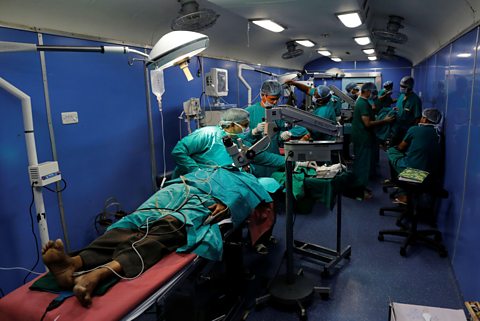Health care in remote areas

Around the world, many people can find a doctor close to where they live, but for millions living in rural communities health care is many miles away. To tackle this, organisations have found innovative ways of getting hospitals on the move, taking them right to the doorsteps of those in need.
Floating hospitals
Around 700 rivers are constantly shaping Bangladesh's landscape - building up some areas, flooding others, and moving small sand islands that people call home.
Along these rivers and the low lying coastal regions it often isn't possible to build permanent hospitals.
Charities including Friendship and IMPACT Foundation Bangladesh have turned to these rivers as a solution for the problems they create. The rivers go into the most remote, the poorest, the most unaddressed communities in Bangladesh. Often these communities have no roads to link them with facilities. These charities have introduced hospital ships which can navigate up rivers to reach remote areas.
One of Friendship's floating hospitals brings health care to remote areas of southern Bangladesh. It is fully equipped to provide these communities with simple treatments and medicines as well as eye, dental and other surgeries.
The ship allows people to receive free treatment they would not otherwise get. This hospital ship helps roughly 155,000 people each year. Using existing transport options to get hospitals on the move has proved a successful way of meeting the shortfall in health care in rural areas.
Hospital trains

In India, more than 895 million people live in rural areas. It would be difficult and expensive to provide local health care facilites for them all.
In 1991, IMPACT Foundation teamed up with the Indian government and railways to convert trains into roving hospitals. India has more than 75,000 km of railways and the hospital trains can use the rail network to reach people in the remotest corners of the country.
Like the hospital ships in Bangladesh, the Lifeline Express trains contain, among other facilities, operations rooms, dental and eye units, laboratories and X-ray rooms.
The trains tour the country offering free treatment and cutting edge surgery to India's rural poor. They have provided procedures ranging from cleft lip operations to ear, nose and throat surgeries to millions of people over the 25 years they have been operating.
Similar hospital trains serve rural communities in countries including China, Mexico, Russia and South Africa.